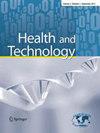数字双胞胎用于乳腺癌治疗——利益相关者对其潜力和挑战的实证研究
IF 3.1
Q2 MEDICAL INFORMATICS
引用次数: 0
摘要
摘要目的乳腺癌是女性中最常见的癌症,每年有230万例诊断和68.5万例死亡。在病人的整个治疗过程中提供必要的信息是最大限度地减少患乳腺癌的风险、尽早发现乳腺癌和帮助治疗过程的关键。数字解决方案提供了全面收集、传输和精密分析信息的能力。具体来说,医疗保健领域的数字双胞胎作为人体的动态复制品,是监测患者状况和基于生物特征数据预测肿瘤发展的有希望的方法。然而,在医疗保健中接受和采用这种数字孪生解决方案在很大程度上取决于治疗过程的个人利益相关者。本研究旨在从相关利益相关者的角度确定数字双胞胎在乳腺癌应用中引入的潜力和挑战。方法对乳腺癌治疗过程中的14位相关利益相关者进行半结构化访谈。然后根据Mayring的定性内容分析对访谈进行分析。结果表明,利益相关者看到了数字孪生解决方案在进一步促进个性化医疗、提高效率和科学效益方面的巨大潜力。然而,医疗保健的敏感性在技术、监管、用户界面和战略领域引发了许多潜在的挑战。利益相关者一致同意数字孪生的潜在好处。然而,现有的系统和个人利益相关者层面的障碍阻碍了它们在乳腺癌环境中的应用。本文章由计算机程序翻译,如有差异,请以英文原文为准。
Digital twins for breast cancer treatment – an empirical study on stakeholders’ perspectives on potentials and challenges
Abstract Purpose With 2.3 million diagnoses and 685,000 deaths annually, breast cancer is the most common cancer in women. The provision of necessary information throughout the whole patient journey is key to minimize the risk of breast cancer, to detect breast cancer as early as possible, and to aid the treatment process. Digital solutions provide abilities to holistically collect, transfer, and sophisticatedly analyze information. Specifically, digital twins in healthcare, as dynamic replicas of human bodies, are promising approaches for monitoring the condition of their patients and predicting tumor developments based on biometric data. However, the acceptance and adoption of such digital twin solutions in healthcare heavily depend on the individual stakeholders of the treatment process. This study aims to identify potentials and challenges of the introduction of digital twins in breast cancer applications from the involved stakeholders’ perspectives. Methods We conducted semi-structured interviews with 14 relevant stakeholders from the breast cancer treatment process. The interviews were then analyzed, based on the qualitative content analysis according to Mayring. Results The results show that stakeholders see great potential in digital twin solutions to further facilitate personalized medicine, efficiency increases, and scientific benefits. However, the sensitive nature of healthcare causes numerous potential challenges in the technical, regulatory, user interface, and the strategic domain. Conclusions The stakeholders unanimously agreed on the potential benefits of digital twins. However, existing systemic and individual stakeholder-level barriers hamper their introduction in breast cancer settings.
求助全文
通过发布文献求助,成功后即可免费获取论文全文。
去求助
来源期刊

Health and Technology
MEDICAL INFORMATICS-
CiteScore
7.10
自引率
0.00%
发文量
83
期刊介绍:
Health and Technology is the first truly cross-disciplinary journal on issues related to health technologies addressing all professions relating to health, care and health technology.The journal constitutes an information platform connecting medical technology and informatics with the needs of care, health care professionals and patients. Thus, medical physicists and biomedical/clinical engineers are encouraged to write articles not only for their colleagues, but directed to all other groups of readers as well, and vice versa.By its nature, the journal presents and discusses hot subjects including but not limited to patient safety, patient empowerment, disease surveillance and management, e-health and issues concerning data security, privacy, reliability and management, data mining and knowledge exchange as well as health prevention. The journal also addresses the medical, financial, social, educational and safety aspects of health technologies as well as health technology assessment and management, including issues such security, efficacy, cost in comparison to the benefit, as well as social, legal and ethical implications.This journal is a communicative source for the health work force (physicians, nurses, medical physicists, clinical engineers, biomedical engineers, hospital engineers, etc.), the ministries of health, hospital management, self-employed doctors, health care providers and regulatory agencies, the medical technology industry, patients'' associations, universities (biomedical and clinical engineering, medical physics, medical informatics, biology, medicine and public health as well as health economics programs), research institutes and professional, scientific and technical organizations.Health and Technology is jointly published by Springer and the IUPESM (International Union for Physical and Engineering Sciences in Medicine) in cooperation with the World Health Organization.
 求助内容:
求助内容: 应助结果提醒方式:
应助结果提醒方式:


